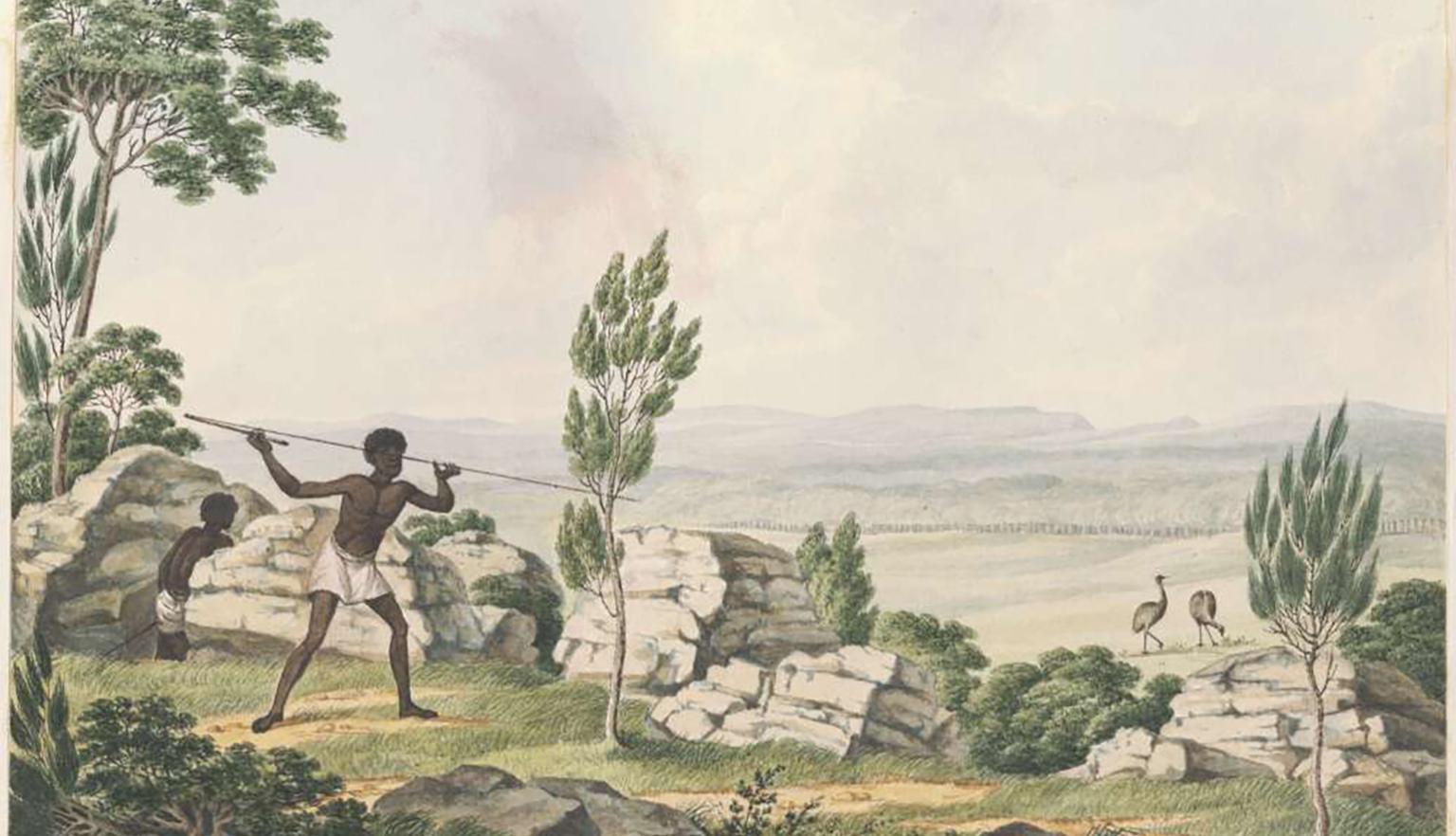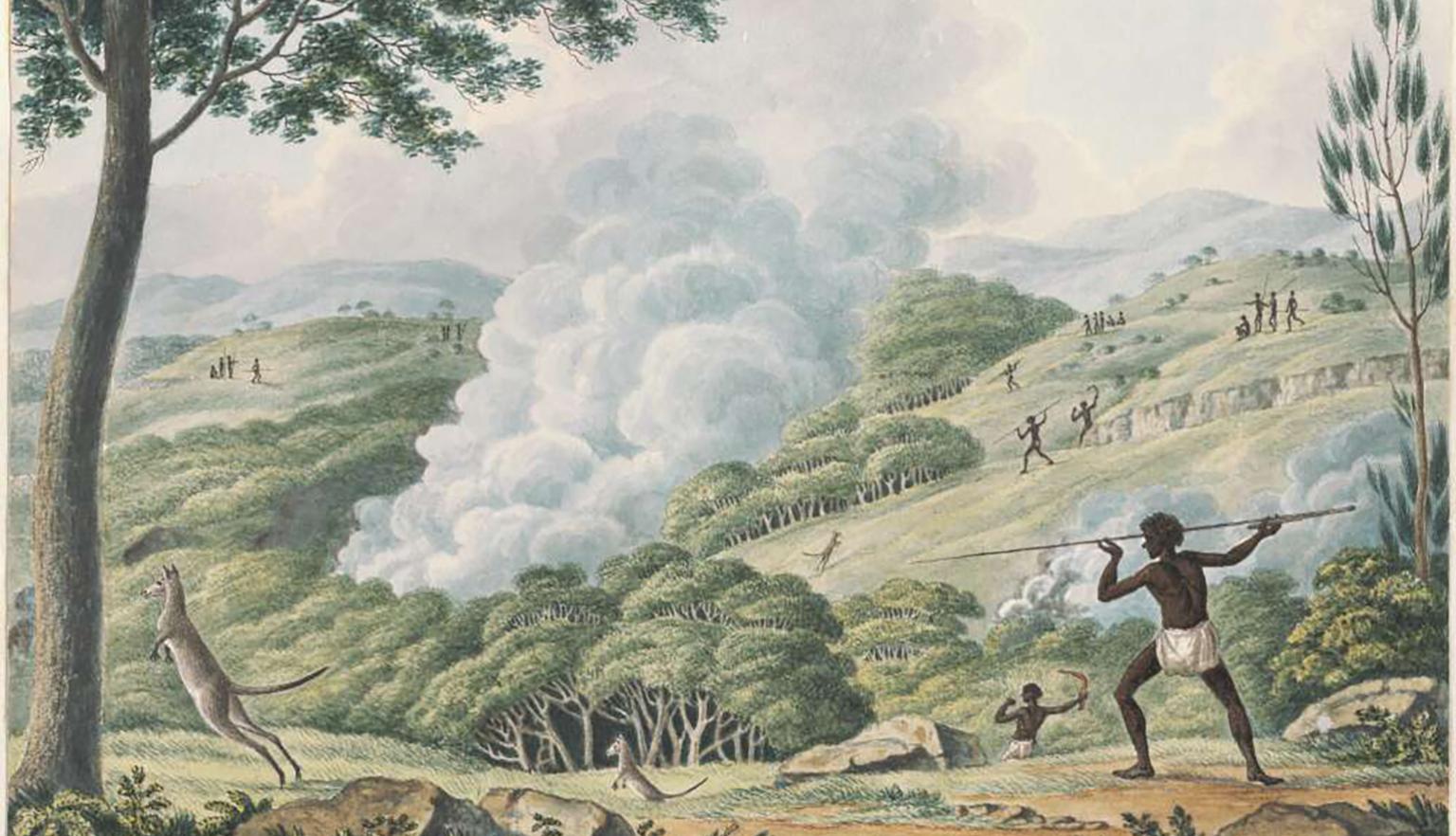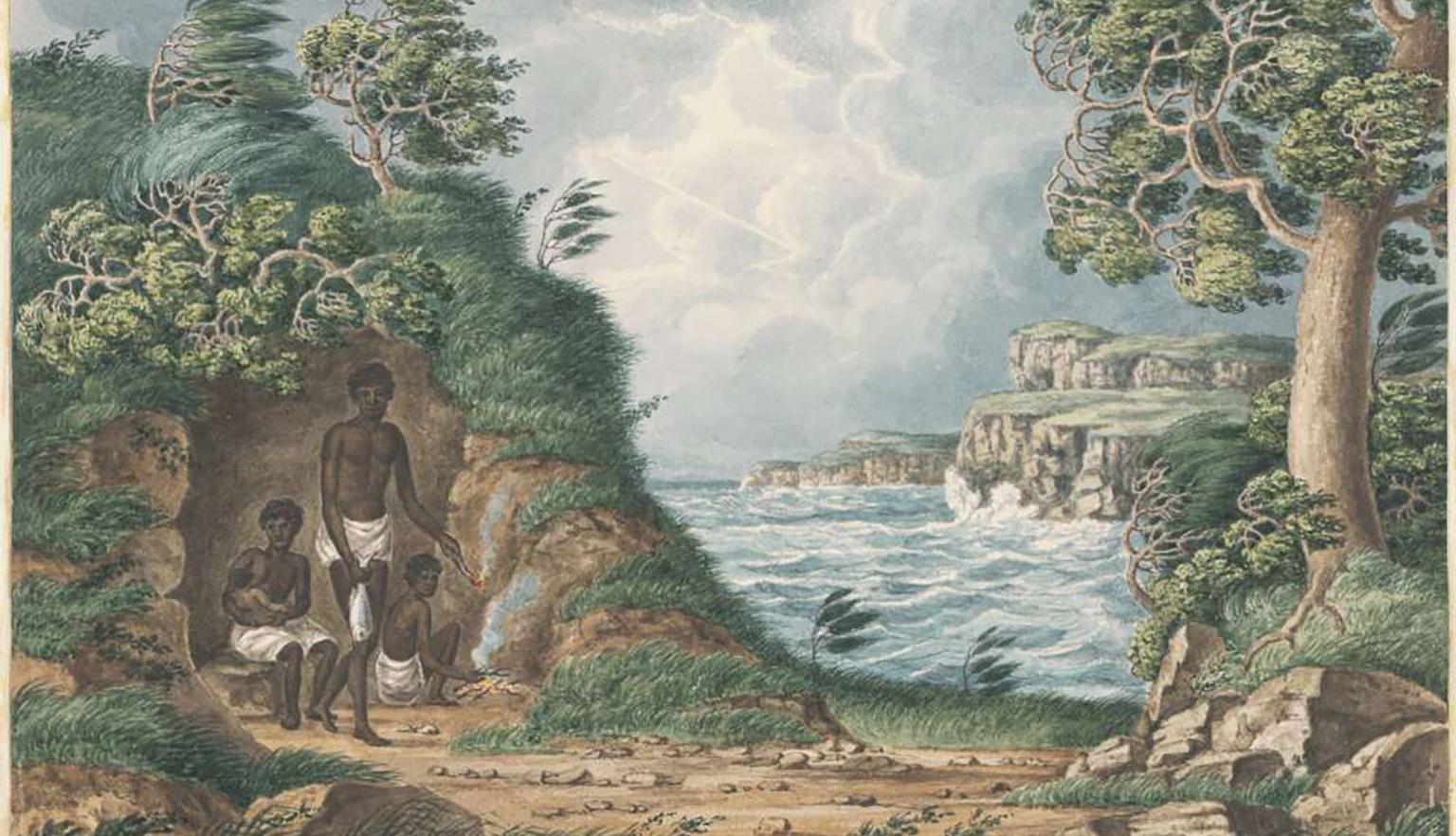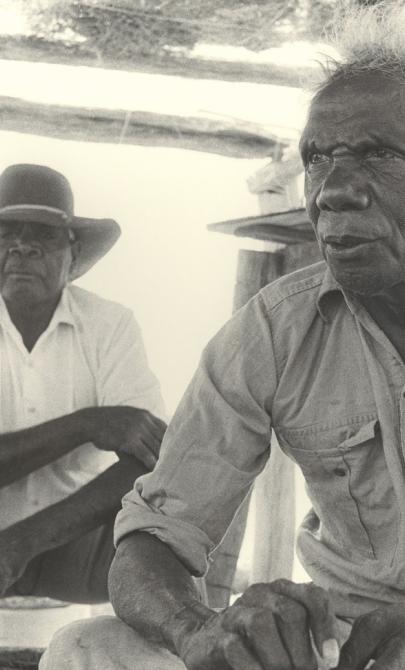First peoples
Who was Joseph Lycett?
Joseph Lycett (1775–1828) was sent to Australia after being convicted of forgery. While in the Newcastle settlement, he was encouraged to paint scenes of Aboriginal life. This resulted in an album titled Original Drawings of the Natives and Scenery of Van Diemen’s Land, 1830, although there was a mistake in the title, Lycett never visited Tasmania, and his paintings were completed around 1820, not 1830.
Activity 1: Everyday life
It is estimated that Aboriginal people have lived continuously in Australia for over 60,000 years. They developed a close connection to the land that provided them with food and shelter. Ask your students to explore the five Lycett paintings to find evidence of ways the people he depicted lived off the land. They should list their findings under the following three headings:
- Food: What did people eat and how did they gather it?
- Shelter: How did they protect themselves from the weather?
- Community: How did they interact with family and friends?
View the Lycett album
Watch the below video to hear all about Lycett's collection of watercolours.
Activity 2: Video debrief
Use these questions to spark a conversation with your students:
- What can we learn about history from paintings?
- How is a painting different from a photograph?
- Do you think paintings, like Lycett's, always show an accurate view of the past?
Related artists and works
For more on this topic, check out the video Figure in the Landscape: John Glover.
Glover is an outstanding Australian landscape painter who also depicted Indigenous people in his work.
Activity 3: Create your own artwork
After looking at Lycett’s paintings, encourage your students to create their own artwork. Ask them to draw a picture of themselves in their current environment. How does their environment shape their lives, just as the land shaped the lives of the Awabakal people?






